ISSN: 2511-7602
Journal for Art Market Studies
ISSN: 2511-7602
Journal for Art Market Studies
Massimiliano Papini
In the 1870s collecting Japanese art products started to be popular among a wider range of collectors, not only among circles of intellectuals, artists, and designers. This cultural phenomenon also reached Italy, and when a group of Japanese diplomats (Iwakura Mission) arrived in Florence in May 1873, it reported a very positive impression of a shop that sold Japanese goods. This article aims to clarify the context and background for this enthusiastic comment, using the archive of Frederick Stibbert (1838-1906), a British citizen born in Florence who created an impressive Japanese collection consisting mainly of armour and weapons, but also ceramics, textiles, and folding screens. Despite his immense wealth and extensive travels around Europe, Stibbert purchased most of the Japanese artworks through Florentine art dealers such as Janetti Padre e Figli, the shop probably referenced by the Japanese diplomats. As this article outlines, Janetti was able to establish a direct supply channel from Japan due to the help of Vittorio Aymonin (1826-1888), a silkworm egg dealer who resided in Japan from 1867 to 1888. This discovery explains both the positive comment expressed by the Japanese diplomats, and the decision made by Frederick Stibbert of choosing Janetti as his favourite dealer of Japanese artworks from the late 1860s to the end of the 1880s.
Following the Meiji Restoration (1869), the new Japanese Government began to consider sending a diplomatic mission to America and Europe in order to gather information about Western countries. The purpose of the Japanese was twofold: to fulfil the ambition of reaching the level of industrialisation and military strength of the Western powers, and to revise the “unequal treaties”.1 Headed by Iwakura Tomomi (1825-1883), the mission left Yokohama in December 1871 and visited the United States and a number of European countries before returning to Japan in September 1873. On their itinerary were the United Kingdom, France, Germany, Holland, but also the newly unified Kingdom of Italy. Even though the attempt to revise the treaties failed entirely, the second goal could be considered as partly achieved, since Japan saw significant industrial development in the decades following the diplomatic mission.
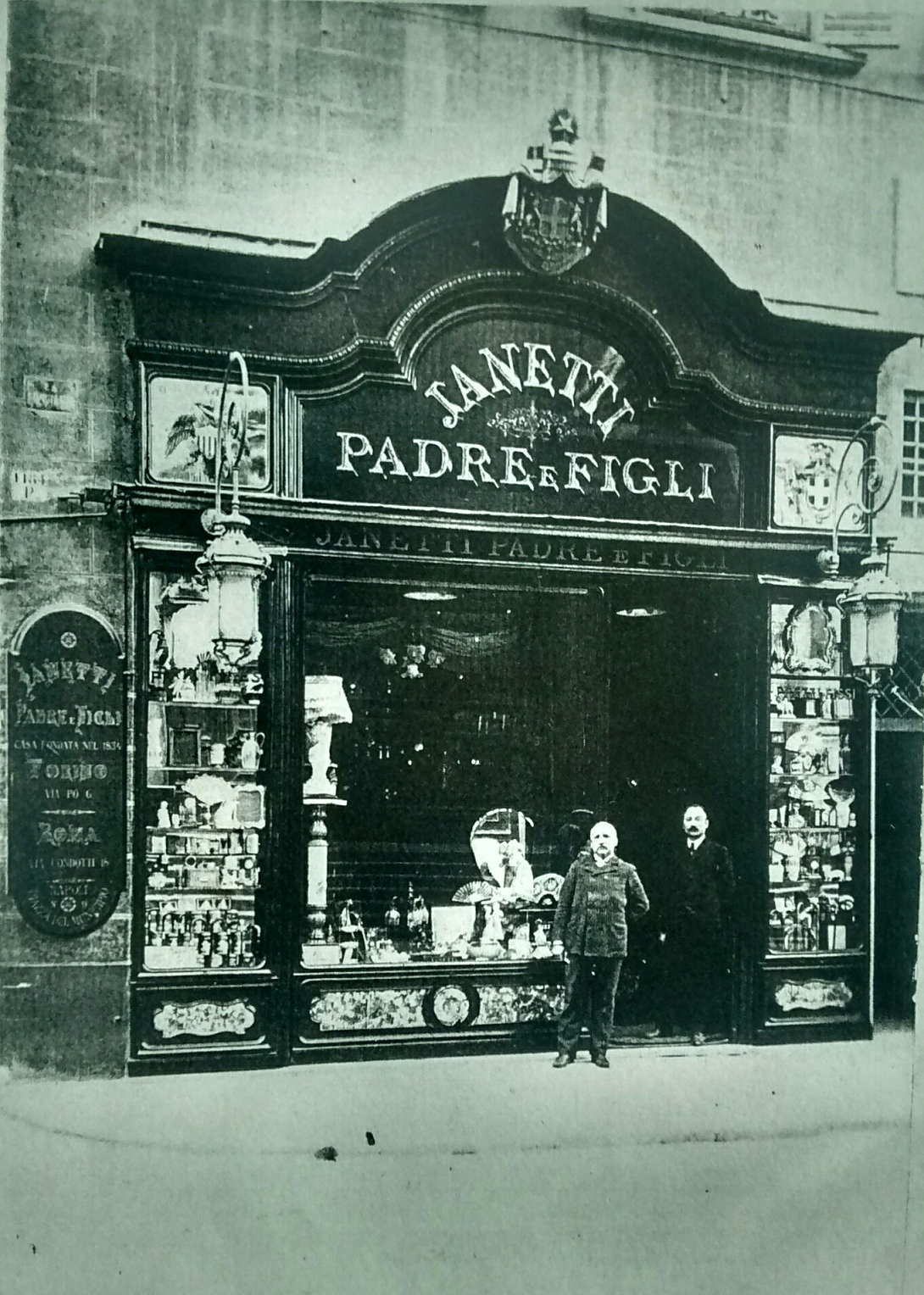
Fig. 1: “Janetti Padre e Figli, Piazza Antinori 1, Florence”, 1866-1890, photograph, 16 cm x 11,5 cm. © Adriano Gulianetti’s Archive, Rome.
Reading the report of the mission written by Kume Kunitake (1838-1931), one of the members of the Iwakura mission, there is an intriguing comment dated 11 May 1873 on a Florentine antique shop that sold Japanese goods:
We went to a shop selling Japanese goods. In most countries there are shops selling Japanese products, but these are mostly vulgar trinkets. This particular shop, however, had a number of finely-made goods, from lacquerware, pottery, bronze metalwork, inlays, cloisonné, fans and ivory carvings to woodblock prints. None of the articles in the shop made us feel ashamed.2
Unfortunately, the original text does not mention the name or the exact location of this business. However, based on secondary sources such as newspaper articles that listed the detailed movements of the diplomatic mission,3 there is general agreement by scholars that Kume Kunitake referred to Emporio Janetti Padre e Figli, whose address was Piazza Antinori 1, Florence (fig. 1).4
Such an enthusiastic comment may seem surprising, given that the mission had already visited both London and Paris, main locations of “Japanmania” and venues of two early notably successful international exhibitions of Japanese art, the Great London Exposition in 1862 and the Exposition Universelle de Paris in 1867. These public events highly contributed to widely promoting the interest in everything from Japan, from art to culture. Paris was also one of the earliest places where Japanese curios were offered from the early 1860s onwards, as illustrated by the numerous antique dealers who ran profitable businesses in this sector, such as Madame Desoye,5 Philippe Sichel (1839/40-99)6 and later Siegfried Bing (1838-1905)7 and Hayashi Tadamasa (1853-1906).8 With regard to London, an important proponent of Japanese goods from the early 1870s was Christopher Dresser (1834-1904),9 while Arthur Lasenby Liberty (1843-1917) opened his famous department store in 1875 where Japanese goods and also works of design (furniture, pottery, textile, etc.) inspired by the Japanese aesthetic were available for purchase.
Returning to the Italian context, traditional scholarship on Japonisme does not typically describe Florence with the same enthusiasm as the Japanese diplomat.10 Italian scholars have recently begun to question this view, especially regarding the process of appropriation of the Japanese aesthetic by late nineteenth-century Italian painters, ceramicists and designers.11 However, only a few of these studies focus on identifying the provenance of the Japanese objects in question,12 and none of them has focused on a specific dealer in Japanese art.
In order to close the gap in this field of studies, this article examines the presence and the provenance of Japanese art on the Florentine antique market, addressing the question of how and why a Florentine antique shop would receive such an enthusiastic comment by a Japanese diplomat about the Japanese goods on sale.
In response, this article will explore the Japanese art market in Florence with a focus on Frederick Stibbert, who created a vast Japanese collection, consisting mainly of armour and weapons, mostly acquired through Florentine art dealers. Taking advantage of the Stibbert Archive13 where receipts of Japanese art purchases are partially preserved and dated from 1869 to 1905, I selected the example of the Florentine shop Emporio Janetti Padre e Figli. Through contacting one of the family firm’s descendants, I was also able to establish a direct connection between the art dealer and Japan. This link was supplied by Vittorio Aymonin, a silkworm egg dealer who resided in Japan between 1867 and 1888.
In order to contextualise Japanese art collecting in Florence around the time the Iwakura Mission visited the city, two significant aspects come into play: firstly, the presence of a large foreign community living in the city, especially British; and the flourishing of Oriental Studies at the nascent University of Florence. While these two aspects cannot be considered as direct causes of Japanese art collecting, they contributed to creating a demand among the wealthy and educated, together with affluent customers’ desire to follow the newest trends from other areas of Europe, especially Paris.
Foreign collectors in Florence strongly supported the local antique market with their eclectic taste, which was not limited to the traditional Tuscan models.14 There are two interesting cases from around the time of the Iwakura mission’s visit to Florence. In 1872 an English writer, Thomas Adolphus Trollope (1810-1892), sold part of his art collection and furniture at public auction. As recorded by an article in the newspaper La Nazione, among the numerous goods, “Chinese and Japanese porcelain” was on offer.15 Trollope lived in Florence from 1843 to 1873, and subsequently moved to Rome where he became correspondent for The Standard.16 Another example is an auction sale organised in Florence in 1874 for the collection of Gustav Oppenheim, a German banker with interests in Egypt and in the Suez Channel. Newspaper articles mention “[...] numerous and astonishing products of the Japanese and Chinese industry, in ivory, lacquer and bronze; [...].”17
With respect to the flourishing Oriental Studies at the local university (at that time called “Istituto di Studi Superiori Pratici e di Perfezionamento”), an important figure was Antelmo Severini, professor of East Asian Languages from 1864. He had initially specialised in Chinese, but from the early 1870s he began to publish Japanese novels translated to Italian. One of Severini’s translations was even praised by Philippe Burty (1830-1890)18 in his first English article on Japonisme.19 Moreover, in 1878 Florence hosted the IVth International Congress of Orientalists, held at Palazzo Medici-Riccardi.20 On that occasion, an artistic/ethnographic exhibition was organised, and Japan was among the many “oriental” countries represented.21
Among the private Japanese art collections in Florence, the most significant was that of Frederick Stibbert (1838-1906), a British citizen who was born and lived most of his life in Florence, where he gathered an immense number of artworks, including Japanese, and displayed them in his mansion.22 Lacking direct heirs, Stibbert left his house and collection to the British government, which then passed the responsibility on to the city of Florence. As a result, the Frederick Stibbert Museum was established in 1908. In the overall collection, Japan played a marginal role, but Stibbert’s immense wealth enabled him to acquire numerous pieces, such as: 95 suits of armour, 300 swords, more than 200 helmets, and 850 tsuba (sword guard). The result was one of the biggest Japanese armoury collections outside of Japan.23
The Anglo-Florentine collector also donated his archive and library, which enabled scholars to look at receipts and letters regarding his purchases and trace their provenances. For Japanese acquisitions, he relied mainly on the two local dealers Janetti and Laschi, but other Japanese antique dealers in Florence could also be identified.
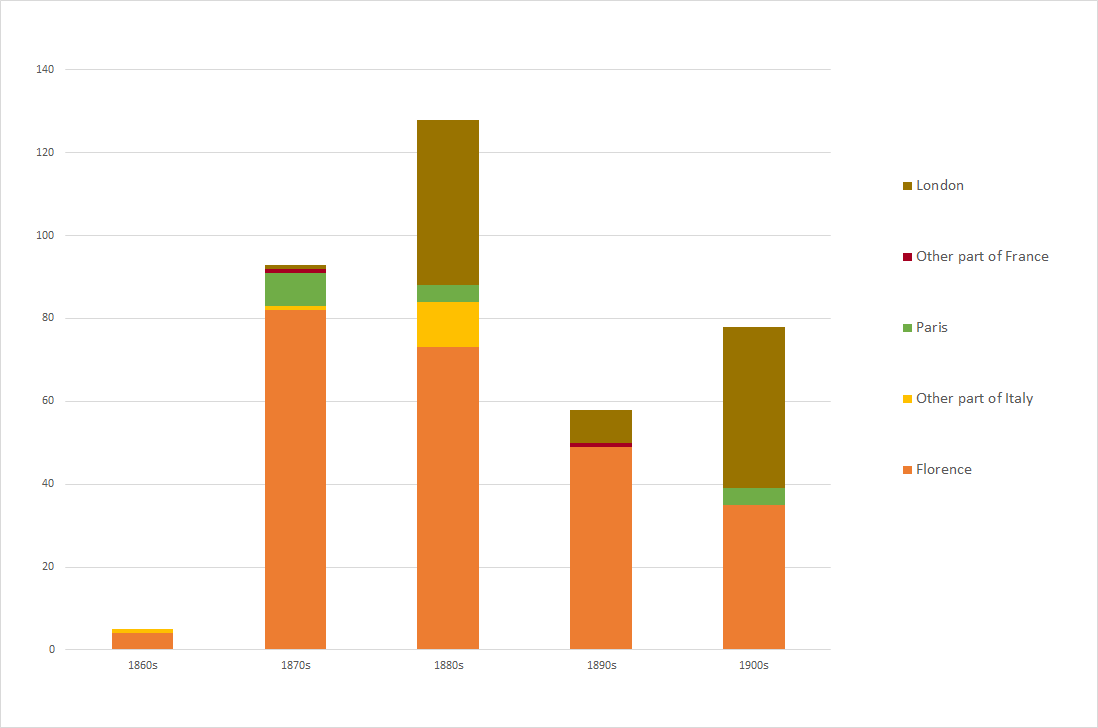
Fig. 2: “Japanese goods purchased by Frederick Stibbert from 1869 to 1906”. Source: Stibbert Archive, Patrimonio Stibbert, Giustificazioni di Cassa; Stibbert Archive, Patrimonio Stibbert Foreign Bills. © Stibbert Museum, Florence.
From the late 1860s to the end of the nineteenth century, Stibbert sourced almost three-quarters of his total acquisitions from Florentine art dealers, as can be seen from a graph analysing receipts in the archive (fig. 2). Janetti was a prominent supplier accounting for almost two-thirds of Stibbert’s total purchases in the 1870s and 1880s (fig. 3). London dealers became relevant from the 1880s but surpassed the Florentines only between 1900 and 1906. Unfortunately, the Stibbert Archive does not preserve all of the receipts relating to the formation of the Japanese collection, so that the amounts shown in this graph should be considered as indicative and not comprehensive. For example, only half of the armour and one-sixth of the swords are documented.
Stibbert’s first documented acquisition of Japanese objects was at Janetti’s in 1869. Four years later, the collector purchased from another Florentine Japanese art dealer, Settimio Laschi; his shops were located in Via dei Fossi 10 and 15. In the same year, a shop called “Magazzino Cinese” also appeared on Stibbert’s list of Japanese art suppliers. Located on Via Frusa 21, it was the only shop on the list located outside the city centre. Almost ten years passed before another dealer appears, when in 1882 Giuseppe Pacini (Via dei Fossi 14) sold to Stibbert, followed two years later by Eligio Montelatici, whose address was in Via Martelli. The next art dealer to appear in Stibbert’s documents is the “Anglo-American Store Ltd” (Via Cavour 39-43) in 1893. The list ends with “Marcello Galli Dunn” (Piazza Santa Maria Novella) and “Emporio Giapponese” owned by G. Braccialini (Via Panzani 26), both in 1896.24 This list is not fully exhaustive, as I excluded art dealers who probably only acted as intermediaries. Generally, it can be said that Stibbert only started to rely on foreign markets (mainly London) from 1876. However, even after 1876, Stibbert frequented Florentine art dealers until the beginning of the twentieth century.
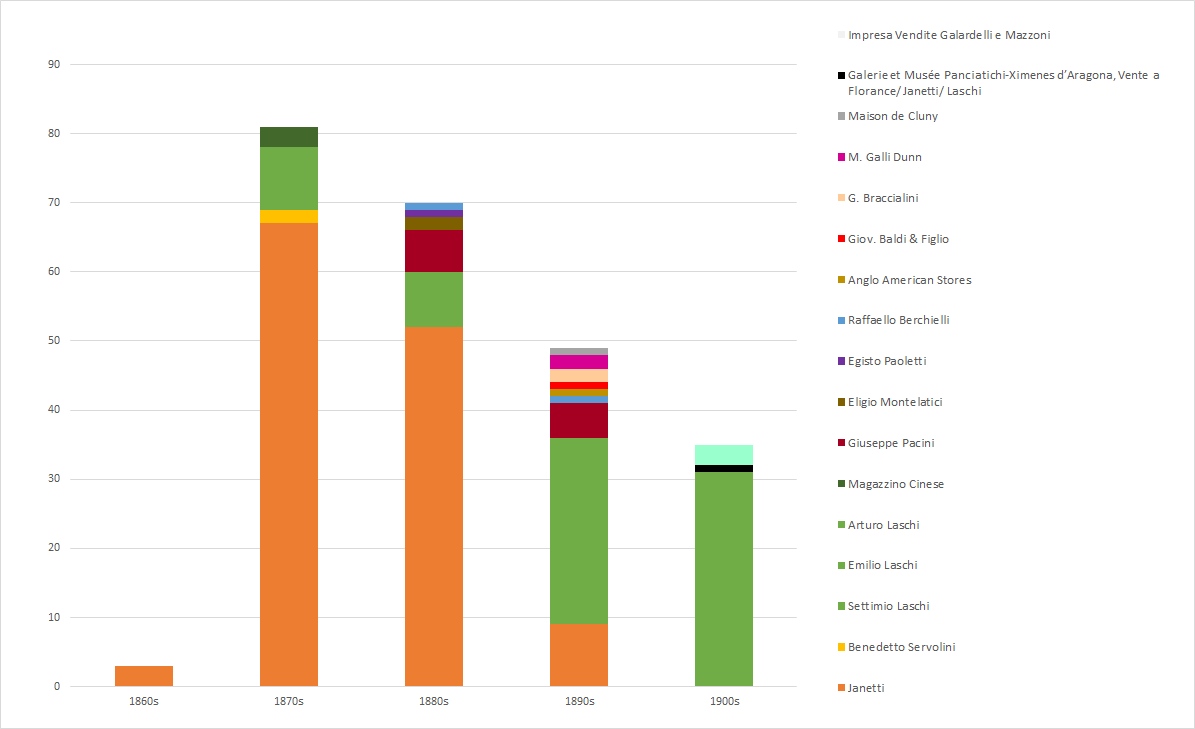
Fig. 3: “Japanese goods purchased by Frederick Stibbert from 1869 to 1906 from Florentine Art Dealers”. Source: Stibbert Archive, Patrimonio Stibbert, Giustificazioni di Cassa. © Stibbert Museum, Florence.
Janetti not only sold Japanese art – on the contrary, it offered a varied catalogue of articles in line with major European trends. At the end of the nineteenth century, the company had four different Italian branches in Turin, Florence, Rome and Naples. As a family-run business, everything revolved around the Janettis, who originated from a small village in the north-west of Italy called Campello Monti.25
The founder of the company, Giovan Antonio Janetti (1790-1857) moved from Campello Monti to Turin in 1834 to establish the first branch of a business selling domestic articles and silverware, produced by local manufactories. Three of his four sons joined the firm: first-born Francesco (1821-1877), Giovan Battista (1829-1909) and Bartolomeo (1838-1919). Francesco in particular was extremely quick to catch shifts in trends and fashions, attracting a demanding high-end clientele and even members of Royalty.26 In 1866, the second branch of the company was inaugurated in Piazza Antinori 1, Florence. Five years later, the third branch opened in Rome in Via dei Condotti 19. This rapid development relates to the newly formed Kingdom of Italy and the double relocation of the capital from Turin to Florence in 1864, and from Florence to Rome in 1871. In 1878, another important figure stepped on to the scene, Francesco Gulienetti (1856-1919), who married one of Giovan Battista’s daughters of and later became a company associate. The retirement of Francesco and Bartolomeo Janetti in the last decade of the nineteenth century left most of the responsibility in the hands of Francesco Gulienetti and Clemente Janetti (son of Giovan Battista), who decided in 1890 to open a further branch in Naples (Piazza dei Martiri 61).
Having clarified the origins and the development of the firm Emporio Janetti Padre e Figli, it is time to return to Kume Kunitake’s favourable impression of the Florentine shop. Unfortunately, there are no documents that mention the company’s sources for Japanese artworks. However, during an interview with one of the heirs – Adriano Gulienetti, descendant of Francesco Gulienetti – he reported that a person named “Aymonino” was frequently mentioned by the family. According to Adriano Gulienetti, this man was able to supply Janetti Padre e Figli due to his frequent travels to Japan.27 No other specific information was handed down, however, I suggest that this person can be identified with Vittorio Aymonin (1826-1888), a silkworm egg dealer who first travelled to Japan in 1864, and from 1867 resided in Yokohama.28 Born in Turin, he founded the company Aymonin & Co, which specialised in selling Japanese silkworm eggs during a period when European silk production had been devastated by pebrine disease, which affected local silkworm breeding. Pebrine was highly contagious, and the Japanese silkworm was considered more resistant to it. For this reason, imports grew enormously. Aymonin & Co supplied various Italian silk production companies, such as Società Bacologica Arcellazzi & Co and G. B. Parodi, both from Milan. Interestingly, the latter was one of the first companies to advertise Japanese art in Milan, following the delivery of the seasonal silkworm egg supply in 1870.29 After Parodi left the silkworm egg trade, he decided to remain in Japan and was appointed librarian in the Japanese Foreign Ministry Office. He died in Tokyo in 1888.30
Two advertisements in a Turin newspaper in 1872 and 1873 document the relationship between Janetti and Vittorio Aymonin. In both notices, the Turin branch of Janetti is referred to as a point of contact where advance payment could be made for the subscription to the next season’s silkworm egg purchases, to be effected by Aymonin in Japan.31 Following these advertisements, Janetti announced the arrival of lacquerware, cloisonné, bronzes, textiles, etc. directly from Japan (fig. 4).32
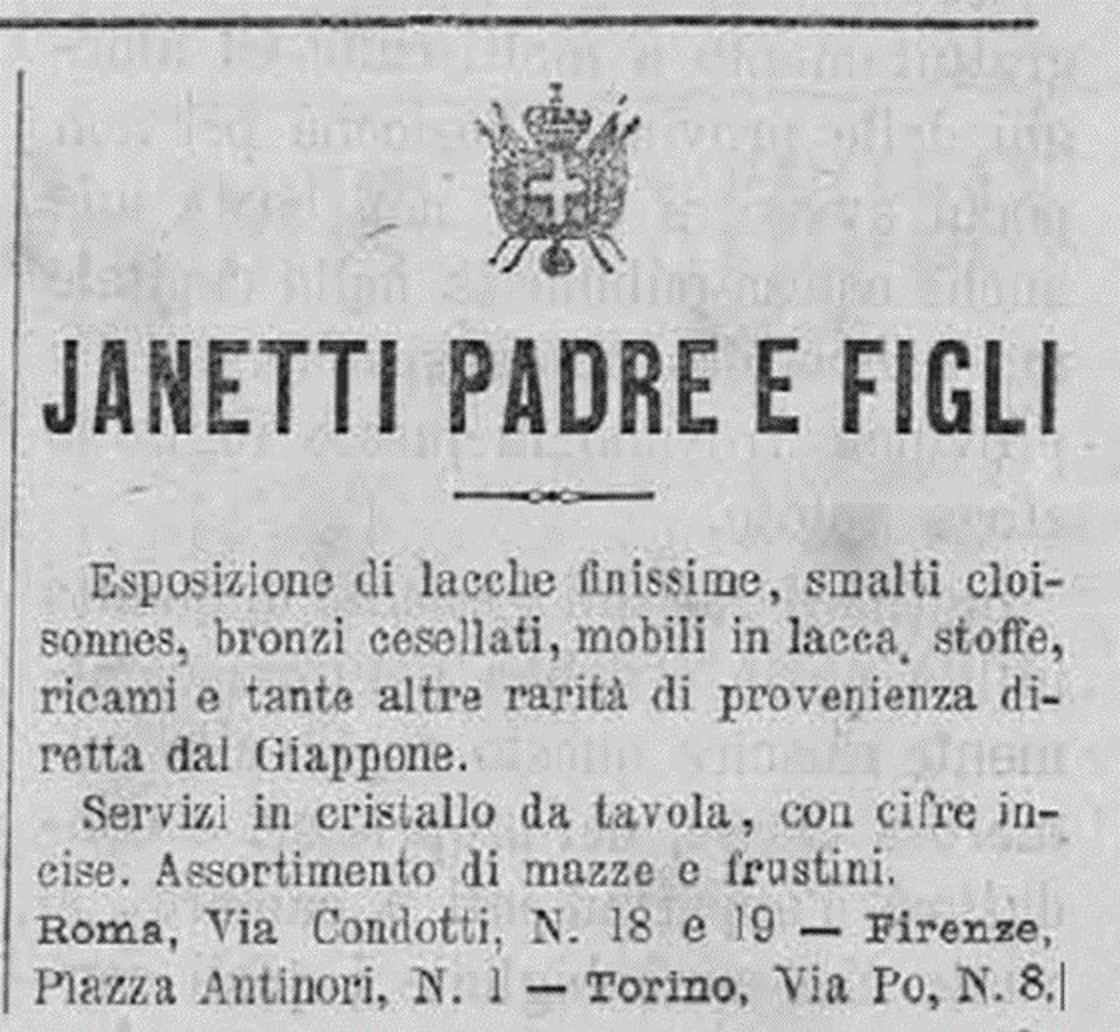
Fig. 4: “Janetti Padre e Figli’s adversisement with reference to Japan”, in Gazzetta d’Annunzi con agenzia d’affari generali per l’Italia e per l’estero, 22 September 1873, 1 (detail). © Archivio Storico Capitolino.
These clues corroborate Adriano Gulienetti’s memory, also because Aymonin frequently returned from Japan to Italy for business, as was typical for a silkworm egg dealer. Furthermore, it seems plausible that Aymonin was happy to differentiate his business by branching out into Japanese art, as demonstrated conversely by his attempts to export Italian products such as wine to Japan.33 Having said that, these diversifications would not preclude Japanese objects offered at Janetti’s from having been previously purchased in other European capitals, especially in Paris, where the brothers travelled frequently and had many connections. The collaboration between Janetti and Vittorio Aymonin should be considered as one of many supply channels of which Janetti could have taken advantage. Furthermore, documentation such as the Stibbert Archive receipts does not specify whether a particular object sold by Janetti to Stibbert was sent directly by Aymonin or not; a gap that will hopefully be closed by future research on this topic.
However, we may easily speculate that Aymonin was probably Janetti’s “ace up the sleeve”, which would not only prompt the enthusiastic comment by Kume Kunitake, but also establish an enduring relationship with wealthy collectors such as Stibbert.
Focusing on Japanese art in the Florentine branch, another highly favourable description can be found in an article published in 1872, five months before the arrival of the Iwakura mission. Yorick,34 the author, wrote in the most important local newspaper, La Nazione:
[...] Janetti is at the same time an art museum, a public international exposition and a model of artistic instances such as porcelains signed with the most celebrated monograms, [...] ivories, enamels, glassware, carved wood, and any kind and species of curios. [...] What you find at Janetti it cannot be found in any other place, and nobody can dream what Janetti could have. Japan sends capriciously modelled bronzes, the most well painted porcelains; the richest fabricated textile, the jewelled metals full of chimeras, monsters and dragons, [...] the brightest lacquers, the prettiest cabinet, the best weapons.35
Furthermore, Janetti Padre e Figli was the only antique shop among the antique dealers who supplied Frederick Stibbert with continuous references in various travel guidebooks for the city of Florence, where it can be found from the early 1870s under the category of “Luxury Trinkets”.36 The only exception is a slightly more detailed travel guidebook where Janetti’s shop in Piazza Antinori is described as specialising in Chinese and Japanese porcelain. Entitled Saunterings in Florence: a new artistic and practical handbook for English and American tourists, it was written by Elvira Grifi and published in Florence in 1896. Janetti and Son is placed in the category “Manufactures and Dealers in Artistic Majolica (Ceramic Arts)”, and its description affirms “by appointment to the Royal House, specialty in China and Japan porcelains”.37 Mentioning Japanese porcelain as one of its specialities, the guidebook emphasises that the Florentine branch was particularly renowned for this category. Furthermore, the presence of Japanese art and artefacts in the shop is documented by advertising materials, such as a leaflet dated between the end of the 1860s and the beginning of the 1870s (fig. 5), or a business card stored in the Stibbert Archives, dated from the early 1880s (fig. 6).
As the documents at the Stibbert Archive form the main source for this study, it is important to outline a clear picture of the relationship between the Anglo-Florentine collector and Janetti’s shops. Frederick Stibbert’s first purchase at Janetti’s occurred in July 1869. Interestingly, it is also the first ever documented purchase of a Japanese article by Stibbert. It is very likely that Stibbert had already purchased two large Japanese vases, but these are not accompanied by a reliable receipt.38 The Janetti’s receipt states: “A Japanese fine lacquer box with flower decoration in gold powder, £ 430. A big Japanese black lacquer box with flower decoration, £ 125. A fine lacquer plateau with gold and human figures decoration, £ 320.”39
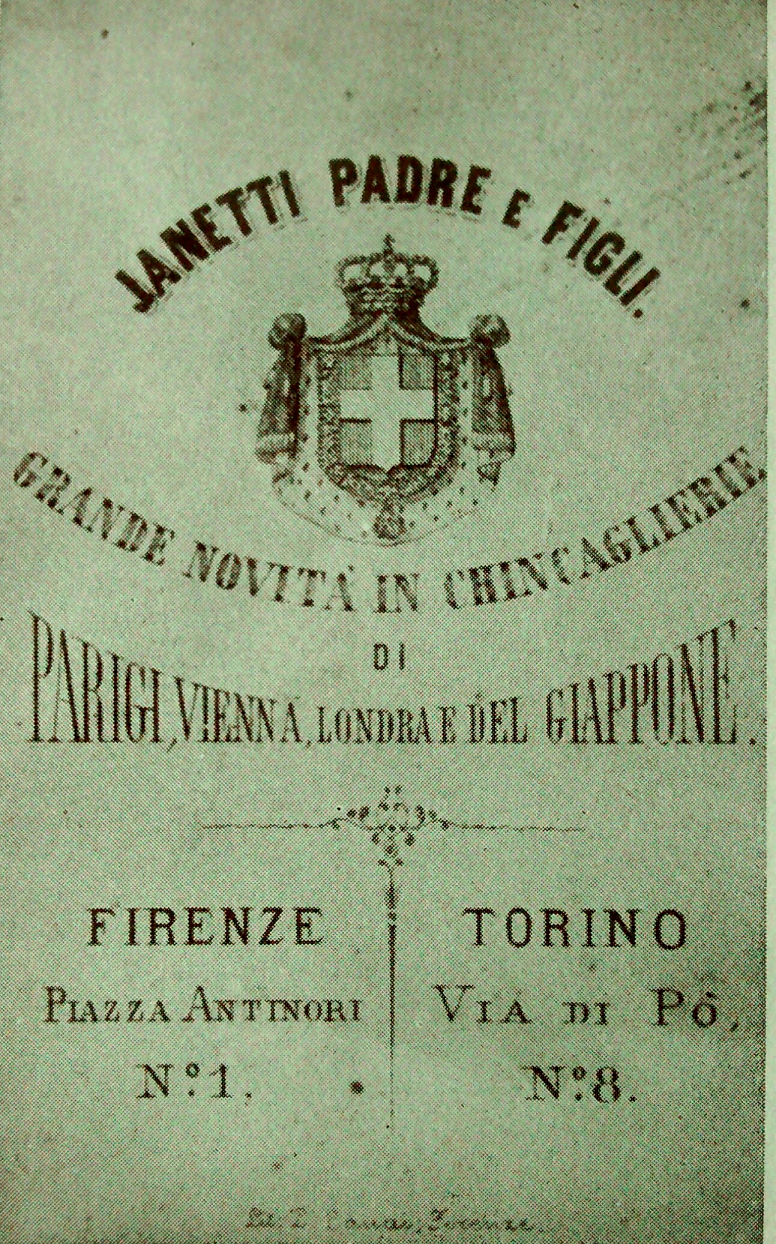
Fig. 5: “Emporio Janetti’s flyer with reference to Japan”, 1866-1871, 9,5 cm x 6 cm. © Adriano Gulianetti’s Archive, Rome.
It is important to underline that these Japanese objects were listed together with other articles; and the grand total of the purchases amounted to 2,394 lire. From then on, Janetti became Stibbert’s favourite art dealer, as is confirmed by the following year’s purchase:
Two Japanese ancient enamel cloisonné vases, £ 600. One Japanese lacquered cigar holder, £ 130. One little lacquered box, £ 20. [...] Three Japanese ancient ivory figures, £ 90. [...] Three meters of Japanese textile 30 £, £90. One Japanese lacquered square-shape box with double bottom, one [lacquered box] with one bottom, together £ 230.40.
These early acquisitions focused on articles in line with the current European taste for Japanese goods, such as ceramics, lacquerware, ivories, and textiles. However, from 1872, the collector turned his attention to Japanese weapons and armour. Janetti was the first to provide Stibbert with a complete set of Japanese archer armour on the 7 March 1872.41 He continued the same year with the following purchases: “Pair of Japanese vases with white background and coloured band, £ 200. [...] Pair of Satzuma [sic] vases with moveable rings and leaves on relief, £ 450. Four Japanese silk cloths painted in varied colours, each 170, £ 680. [...] One Japanese Ivory [...] £ 70.”42
In this receipt, Janetti notably first used a Japanese term, in this case “Satzuma”.43 This Japanese manufacture was quite popular on the Western market, and it was produced in the homonymous province in the south of Japan. Compared to other Florentine antique dealers who sold to Stibbert, Janetti was the only dealer to adopt a Japanese term.44
During the late 1870s, Stibbert kept purchasing similar types of Japanese objects such as vases, textiles, ivories, weapons and armour. The most interesting exceptions included a lacquered horse saddle for which he paid 850 lire (the most expensive article bought to date),45 and a pair of bronze lamps.46 Among the acquisitions during the following decade, other exceptional purchases included a pair of three fold screens made between the late seventeenth and beginning of the eighteenth centuries by an artist of the Tosa School and decorated with scenes inspired by the Genpei War (1180-1185) (fig 7).47 These historical events were handed down thanks to the Tales of Heike, one of the most famous Japanese epic novels, which had been compiled in the fourteenth century. The same receipt detailing the pair of screens also mentions two vases made by one of the most famous potters of the Meiji era, Miyagawa Kōzan (1842-1916).48
From the 1890s, Stibbert’s acquisitions of Japanese objects from Janetti decreased in volume compared to previous decades. They were limited to a “Japanese Skirt”,49 “2 Japanese Swords”,50 an “Antique Japanese Fragment, [...], 11 metres of Japanese textile”,51 concluding with four Japanese fans.52 This represented a dramatic change in comparison with purchases made in the same period from other antique dealers, predominantly Laschi.53 This trend continues from 1900 to Stibbert’s death in 1906, a period in which Janetti did not supply any more Japanese articles to the collector, who now bought almost exclusively through members of the Laschi family. Settimio, Emilio and Arturo Laschi were art dealers that have to be considered mainly as intermediaries between buyers and the Italian and European markets.54 Having said that, it must also be noted that the decline of commercial relations between Janetti and Stibbert only refers to Japanese art, since the business relationship continued in other areas. Comparing Laschi and Janetti, it seems clear that the former started to be favoured by Stibbert from the 1890s. The Stibbert Archive documents alone do not allow us to hypothesise on the reasons for this change of preference. However, I suggest that the main cause was related to Vittorio Aymonin’s death in 1888.
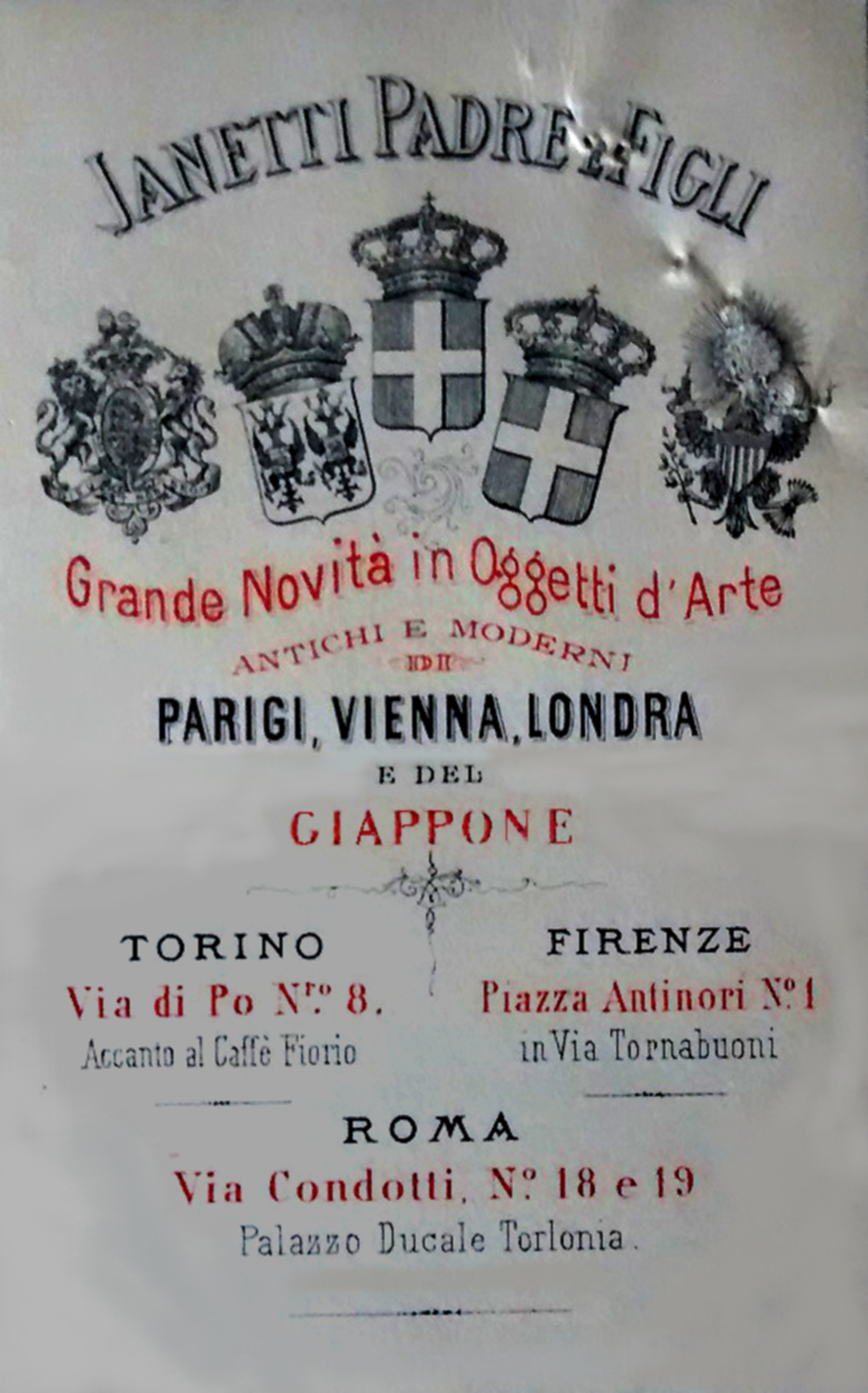
Fig. 6: “Emporio Janetti’s business card with reference to Japan”, c.1881, 10 cm x 6cm. Stibbert Archive, Patrimonio Stibbert, Giustificazioni di Cassa 1880-1881, c. 890. © Stibbert Museum, Florence.
Following on from the main topic of this article, Janetti’s must also be discussed in a global context and in comparison with more famous and better documented Japanese art dealers in Western countries. Firstly, as Florence was mostly famous for Renaissance art, the majority of the local antique dealers specialised in that period. Consequently, most of the foreign collectors who visited the city, did so in order to buy art and artefacts produced during this “golden age”, or at least contemporary products that emulated the Renaissance aesthetic. However, a minority of buyers were also interested in “exotic” objects, as testified by the auction sales organised in Florence in the second half of the nineteenth century. Focusing on Florentine Japanese art dealers, clearly none of them could rival figures such as Siegfried Bing, Hayashi Tadamasa, or later Yamanaka Sadajirō in New York55 in terms of art historical expertise in Japanese artworks. Excluding “Magazzino Cinese” and “Emporio Giapponese”, all the other shops including Janetti’s considered East Asian art just as one of their profitable categories, and they also never invested in producing manufactured articles influenced by the Japanese style such as Arthur Lasenby Liberty in London, or tried to attract a wider audience to the Japanese artistic culture as Bing did with his journal The Japon Artistique.56
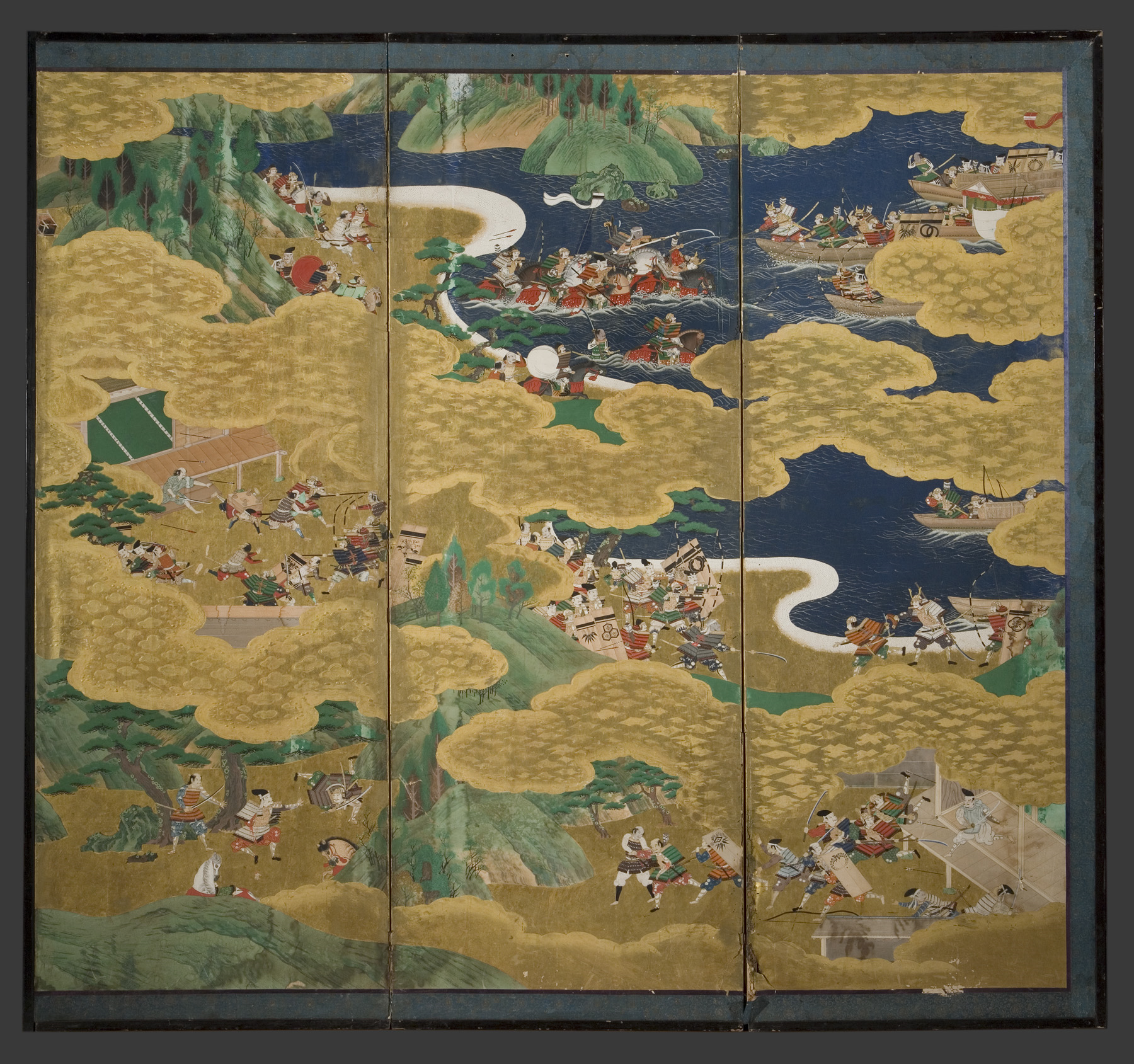
Fig. 7: Tosa school (?), “Genpei War from the Tales of Heike”, end of seventeeth to beginning of eighteenth century, Japan, pair of three-panel folding screen, 193,5 cm x 170 cm (each), ink, colour and gold on paper, Stibbert Museum, nn. inv. 7594-7595 (detail of the first screen). © Stibbert Museum, Florence.
This article demonstrates how widespread the appreciation of Japanese art was in the second half of the nineteenth century, even in countries and cities that are often overlooked in research related to the Japonisme phenomenon, such as Italy and Florence. Thanks to the documents of the Stibbert Archive, it is possible to identify most of the Florentine art dealers who sold Japanese artworks from 1869 to 1906. Among them, Janetti Padre e Figli was prominent, and deeper research revealed that the firm had an Italian agent in Japan, who almost certainly sent examples of Japanese goods back to Janetti’s shops in Italy. The commercial relationship between Janetti and Aymonin has to be considered the principal reason for the presence of Japanese “finely-made goods” in Janetti’s Florentine branch and it also provides the context for the enthusiastic quote from Kume Kunitake’s report. Moreover, this direct supply channel between Italy and Japan repudiates the total dependence of the Florentine art market on other European capitals: Japanese art was directly imported to Italy from the 1860s onwards, mainly in connection with the silkworm egg trade.
Massimiliano Papini is a PhD Student at Northumbria University.
1 See Ian Nish, ed., The Iwakura Mission to America and Europe: A New Assessment (Richmond: Curzon Press, 1998).
2 Translated by Peter Kornicki, in Kume, Kunitate, Graham Healey, and Chūshichi Tsuzuki, eds., The Iwakura Embassy, 1871-1873: a True Account of the Ambassador Extraordinary & Plenipotentiary’s Journey of Observation through the United States of America and Europe, vol. 4 (Chiba, Japan: Japan Documents, 2002), 276.
3 See newspaper articles in La Nazione, 10, 11 and 13 May 1873.
4 Silvio Calzolari, Firenze e il Giappone (Florence: SP 44 Editore, 1886), 40; Dominique Charles Fuchs, Frederick Stibbert e il Giapponismo, in Museo Stibbert Firenze, no. 1 (1995), 26; Martina Becattini, Il contesto culturale per la nascita del Giapponismo in Toscana, in V. Farinella and F. Morena, eds., Giapponismo. Suggestioni dell’Estremo Oriente dai Macchiaioli agli anni Trenta (Livorno: Sillabe, 2012), 38.
5 See Christopher Reed, Bachelor Japanists: Japanese Aesthetics and Western Masculinities (New York: Columbia University Press, 2016), 59-62.
6 See Max Put, Plunder and Pleasure: Japanese Art in the West, 1860 – 1930 (Leiden: Hotei Publishing, 2000), 19-23, 33-38, 43-72.
7 See Gabriel Weisberg, Edwing Becker and Evelyn Possémé, The Origins of L’Art Nouveau: The Bing Empire (Amsterdam: Mercatorfonds 2004).
8 See The Committee of Hayashi Tadamasa Symposium, eds., Hayashi Tadamasa: Japonisme and cultural exchanges (Tokyo, Hatsubaimoto Seiunsha, 2007).
9 In 1873 Dresser founded the Alexandra Palace Company and became art adviser to the firm Londos & Co. In 1880, he opened a shop called Art Furniture Alliance. All these three companies were also importers of Japanese goods. See Stuart Durant, Christopher Dresser (London: Academy Editions 1993), 25-38; Widar Halen, Christopher Dresser: a Pioneer of Modern Design (London: Phaidon Press, 1993), 33-66.
10 The only exception is the article by Nancy Troyer, Telemaco Signorini and Macchiaioli Giapponismo: A Report of Research in Progress, in The Art Bulletin 66 (1984), 136-145.
11 See Farinella and Morena, Giapponismo. Suggestioni dell’Estremo Oriente dai Macchiaioli agli anni Trenta; but also Vincenzo Farinella and Vanessa Martini, eds., Giapponismi italiani tra Otto e Novecento (Pisa: Pacini Editore 2016).
12 See Francesco Morena, Le raccolte giapponesi nei Musei Civici di Trieste, in Adolfo Tamburello, ed., Italia – Giappone: 450 anni, vol. 1 (Roma-Napoli, Istituto Italiano per l’Africa e l’Oriente, 2003), 435-443; Claudio Zanier, Semai: setaioli italiani in Giappone (Padova: CLEUP, 2006), 248-253; Pierfrancesco Fedi, Frammenti di Estremo Oriente a Roma. Alcuni spunti di riflessione sulla Collezione Wurt nel Museo Nazionale del Palazzo di Venezia a Roma, in F. Mazzei and P. Carioti, eds., Oriente Occidente e Dintorni... Scritti in onore di Adolfo Tamburello, vol. 3 (Napoli, 2010), 1095-1118; Francesca Benini, Giapponismi nell’opera di Giovanni Segantini, in Farinella and Martini, Giapponismi italiani, 105-127; Eugenia Querci, Riflessi dell’arte giapponese a Roma, 1868-1915, in Farinella and Martini, Giapponismi italiani, 129-153.
13 Abbreviated in the following as AS.PS.GC (Archivio Stibbert, Patrimonio Stibbert, Giustificazioni di Cassa).
14 See Marcello Fantoni, et al., eds., Gli anglo-americani a Firenze. Idea e costruzione del Rinascimento (Rome: Bulzoni Editore, 2000).
15 La Nazione, 9 November 1872.
16 Thomas Seccombe Trollope, Thomas Adolphus, in Dictionary of National Biography, 1885-1900, vol. 57 (London: Smith, Elder & Co, 1899), 249.
17 La Nazione, 2 May 1874.
18 Burty was one the most important promoter of the Japanese art and culture in France during the second half of the nineteenth century and also the person who coined the term “Japonisme” in 1872. Philippe Burty, Japonisme, in La Renaissance Littéraire et artistique, I, no. 4 (18 May 1872).
19 “In 1872, M. Antelmo Severini, of Florence, published a new and, of course, more exact translation of this same novel, in Italian”. Philippe Burty, Japonisme, in The Academy (7 August 1875), 151.
20 Before Florence, the Congress of Orientalists was held in Paris (1873), London (1874) and St. Petersburg (1876). See also Filipa Lowndes Vicente, Other Orientalisms: India between Florence and Bombay, 1860-1900 (New Delhi: Orient Blackswan, 2012).
21 G. Carrocci, Il Congresso degli Orientalisti, in L’Illustrazione Italiana, vol. 4, no. 40 (1878), 218-219.
22 Frederick Stibbert wealth is mainly due to his grandfather Giles, a British Army general and governor of Bengal. The fortune that Giles gathered in South East Asia was later inherited by Frederick’s father, Thomas, who decided to settle in Florence.
23 For more information about Frederick Stibbert, see also Francesco Civita, Frederick Stibbert, the man, his museum and his collection of Japanese arms, armour and art, in Andon, 101 (2016), 73-87.
24 The latter is particularly interesting as the Stibbert Archive receipt mentions that the Florentine shop had a Japanese correspondent in Tokyo; further research is needed.
25 Giovanni Zolla and Antonio Tensi, Campello Monti: dalla sua origine fino ai giorni nostri (Omegna: Luigi Vercelli Editore, 1940), 16.
26 Zolla and Tensi, Campello Monti, 138.
27 Interview in Rome between the author and Adriano Gulienetti on 29 January 2016.
28 Zanier, Semai, 280-281.
29 Zanier, Semai, 252.
30 Aoyama, Tokyo Metropolis, Japan Plot: Foreign Section: Sec. S1 i-4, Plot 19-20. In 1906, Alfonso Gasco remembered him in an official report sent to the Italian Foreign Office as the founder of one of the Italian companies that left the Japanese with a “pleasant memory”. Alfonso Gasco, Gli Italiani al Giappone, in Bollettino del Ministero degli Affari Esteri 328 (1906), 4-5, (60-61).
31 Gazzetta Piemontese, 14 June 1872, 2 July 1873. I am thankful to S. Turina for this information. Stefano Turina, ‘Vittore Grubicy e il giapponismo tra Italia ed Europa’ (MA Thesis, Università degli Studi di Torino, 2012), 72-73.
32 Gazzetta d’Annunzi con agenzia d’affari generali per l’Italia e per l’estero, 22 September 1873, 1. I am thankful to Stefano Turina for this information.
33 Zanier, Semai, 280-281.
34 Yorick was the pen name of Pietro Ferrigni (1836-1895), a writer who published articles about Florentine and Tuscan everyday life. See also Pietro Ferrigni, Su e giù per Firenze (Florence, 1877), 15, 19-21, 34.
35 La Nazione, 31 December 1872.
36 In Italian chincaglieria. Guida Scientifica, Artistica e Commerciale della città di Firenze (Florence: Galletti e Cocci, 1873), 155; Guida manuale di Firenze e de’ suoi contorni: con vedute, pianta della città ed i cataloghi delle gallerie (Florence: Pineider, 1908), V.
37 Elvira Grifi, Saunterings in Florence: a New Artistic and Practical Hand-Book for English and American Tourists (Florence: Bemporad & Figlio, 1896), XXVII.
38 In May 1869 Stibbert payed for two wood bases to support two big Japanese vases, AS.PS.GC 1896, c.107. According to Martina Becattini, the vases can be identified with the two signed by Hichozan Shinpo (n. inv.12570, 12571), and sold at the Paris International Exhibition (1867). Martina Becattini, La genesi della collezione giapponese e gli allestimenti storici, in Samurai! Armature Giapponesi dalla Collezione Stibbert, (Livorno: Sillabe, 2013), 13.
39 AS.PS.GC 1869, c. 163. In this quote, £ refers to Italian lire.
40 AS.PS.GC 1872, c. 525. In this quote, £ refers to Italian lire.
41 AS.PS.GC 1872, c. 278. According to Martina Becattini, it could be possibly identified with the Japanese archer armour (n. inv. 7845). Becattini, La genesi della collezione giapponese, 17, n.1.
42 AS.PS.GC 1872, c. 393. In this quote, £ refers to Italian lire.
43 Currently, the correct transliteration is considered “Satsuma”, not “Satzuma”.
44 However, this fact should not be overestimated, as Satsuma pottery was commonly known to many Japanophilists, especially in Paris, a city highly frequented by Francesco and Bartolomeo Janetti, and this information could have also been passed by Janetti’s agent in Japan, Vittorio Aymonin. Moreover, reading through all the receipts there is no other Japanese term mentioned apart from “Satzuma”, thus there are not enough elements to point out that members of the Janetti family possessed a specific knowledge of the Japanese pottery.
45 Purchased in March 1877. AS.PS.GC 1878-79, c.550.
46 Purchased in December 1879. AS.PS.GC 1880-1881, c.892.
47 The pair of screens were paid with the sum of 500 lire. AS.PS.GC 1882-1883, c.767.
48 Becattini, La genesi della collezione giapponese, 13. Regarding Miyagawa Kōzan, see also Clare Pollard, Master Potter of Meiji Japan: Makuzu Kōzan (1842-1916) and His Workshop (Oxford: Oxford University Press, 2002), 35, 49.
49 AS.PS.GC 1891, c. 371.
50 AS.PS.GC 1894, c. 306.
51 AS.PS.GC 1895, c. 380.
52 AS.PS.GC 1896, c. 598; AS.PS.GC 1898, c. 699.
53 Stibbert purchased from Laschi among the many: “[...] an ancient Japanese armour [...] £ 225”, AS.PS.GC 1891, c. 490; “[...] a Japanese armour [...] £ 230”, AS.PS.GC 1894, c. 585; “[...] 2 Japanese vases, £ 100”, AS.PS.GC 1896, c. 606. In this quote, £ refers to Italian lire.
54 See also Barbara Bertelli, ‘Commercio antiquario a Firenze nel primo trentennio dopo l’Unità d’Italia: protagonisti, transazioni e circolazione delle opere d’arte’ (PhD Thesis, Università degli Studi di Udine, 2012) 130-131.
55 See Sonoko Monden, Yamanaka Sadajiro (1866–1936), in H. Cortazzi, ed., Britain & Japan: Biographical Portraits, vol. 8 (Leiden: Global Oriental, 2013), 278-292.
56 Le Japon artistique: Documents d’art et d’industrie ran from 1888 to 1891, and was published in French, English and German editions.